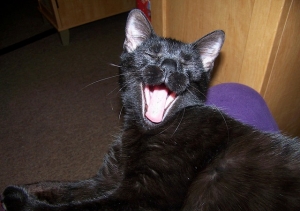Your pet’s oral hygiene is a key component of a healthy lifestyle. Here are some tips for keeping their teeth and gums in tip-top shape.
Gum disease is one of the single greatest health risks for dogs and cats alike—and vets say that the vast majority of pets show signs of oral disease by age 4. Bacteria from a pet’s mouth can enter the bloodstream and infect organs like heart, liver, and kidneys. Luckily, the worst case scenario is entirely preventable.
First, get in the routine of checking your pet for signs of poor health: rotten breath, plaque or tartar, red and inflamed gums, loss of appetite (which signals sensitive teeth), excessive drooling, bleeding (especially noticeable after mealtime), loose teeth, and even tumors or cysts in the mouth.
It’s important to practice preventive care, especially since it’s hard for your furry friend to tell you when they’re in pain. Try to introduce healthy habits at a young age, but don’t believe the adage that “you can’t teach an old dog new tricks”: with patience and positive reinforcement, you can improve your pet’s oral hygiene at any time! Here’s how:
- Get your pet comfortable by gradually introducing mouth checks. When in doubt, move slowly! Pets need lots of patience when they’re learning new routines.
- Buy a canine or feline toothbrush (these have softer bristles and ergonomic heads) or use clean gauze wrapped around your finger. DO NOT use human toothpaste; it’s dangerous for pets! You can find pet toothpaste at the pet store or through your vet, or make your own with this simple recipe.
- Start by gently massaging their lips by hand; then, lift the lips to check teeth and gums for build-up. Once they’re familiar with that, give them a small taste of toothpaste, then let them try the toothbrush before you brush their teeth.
- Offer lots of praise, favorite toys, and the occasional (healthy!) treat.
- Aim to brush your pet’s teeth at least 2-3 times/week—preferably everyday.
- Healthy chew toys act like a toothbrush by cutting down on tooth build-up. Look for ones that are durable but have a bit of give. Cats like them too!
- A proper diet goes a long way—human food irritates pets’ mouths. Hard food can eliminate build-up, and you can find some formulas for improving oral health. Or look for additives to put in their water bowls.
- Take your furry friend for regular check-ups, and always ask your vet to check their teeth and gums.
- Ask your vet about antibiotic gels to use topically when oral health issues flare up.




